Bright Beer Tank
Overview
Bright beer tanks (BBTs) play an essential role in the brewing process. These specialized vessels are designed to hold beer post-fermentation for maturation, carbonation, and clarification before packaging. Whether you’re running a large-scale brewery or a small craft operation, bright beer tanks are indispensable for ensuring your beer meets quality standards.
This guide explores everything you need to know about bright beer tanks—from their role in brewing to installation, operation, and maintenance. We’ll also provide comparison tables, troubleshooting tips, and answers to frequently asked questions.
What Is a Bright Beer Tank?
A bright beer tank, sometimes referred to as a conditioning tank, serves as the final stop in the brewing process before beer is packaged into kegs, cans, or bottles. Think of it as the finishing school for your brew. The tank allows the beer to mature, clarify, and develop the desired carbonation level.
These tanks are engineered for precision, with features such as pressure-rated designs, cooling jackets, and built-in carbonation stones. Bright beer tanks ensure the product achieves the perfect clarity, flavor profile, and fizz before reaching the customer.
Key Features of Bright Beer Tanks
- Pressure-rated designs: Withstand carbonation pressures.
- Cooling jackets: Maintain ideal beer temperature.
- Polished interior: Ensures hygiene and prevents flavor contamination.
- Sampling ports: Allow quality checks without opening the tank.
- Customizable configurations: Tailored to brewery needs.
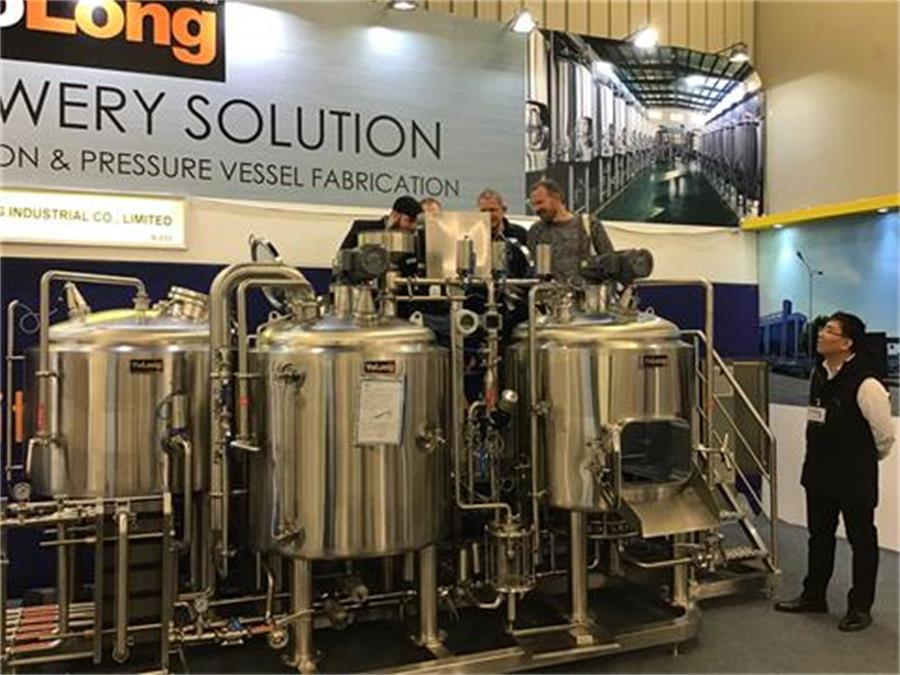
The Brewing Process: Where Bright Beer Tanks Fit In
Step-by-Step Brewing Overview
- Mashing and Boiling: The malted grains are mashed to extract fermentable sugars, followed by boiling to sterilize the wort.
- Fermentation: The boiled wort is transferred to fermenters where yeast converts sugars into alcohol and CO2.
- Conditioning in Bright Beer Tanks: Once primary fermentation is complete, beer is transferred to a bright beer tank for maturation, carbonation, and final clarification.
- Packaging: The beer is finally packaged into bottles, cans, or kegs.
Bright beer tanks play a pivotal role in refining the beer’s taste, clarity, and carbonation. Without this step, the product may fall short of consumer expectations.
Troubleshooting Common Issues with Bright Beer Tanks
1. Carbonation Problems
- Issue: Beer isn’t reaching the desired carbonation level.
- Solution: Check the carbonation stone for clogs or damage. Ensure the CO2 regulator is set correctly.
2. Temperature Fluctuations
- Issue: Beer temperature is inconsistent.
- Solution: Inspect the cooling jacket and glycol system for leaks or malfunctions. Ensure the tank’s insulation is intact.
3. Foaming During Transfer
- Issue: Excessive foam when transferring beer to the tank.
- Solution: Reduce transfer speed and ensure hoses are sanitized to prevent contamination.
4. Clarity Issues
- Issue: Beer remains cloudy.
- Solution: Extend the conditioning period or use a filtration system to remove excess particulates.
Bright Beer Tank Specifications
Capacity, Space, Design, and Customization
| Parameter | Details |
|---|---|
| Capacity | Ranges from 5 barrels (BBL) to 300+ BBL for different brewery scales. |
| Space Requirements | Compact models available for small breweries; large tanks for high production. |
| Design Features | Pressure-rated, polished interior, cooling jackets, sampling ports. |
| Customization | Options for size, pressure ratings, and additional ports for instrumentation. |
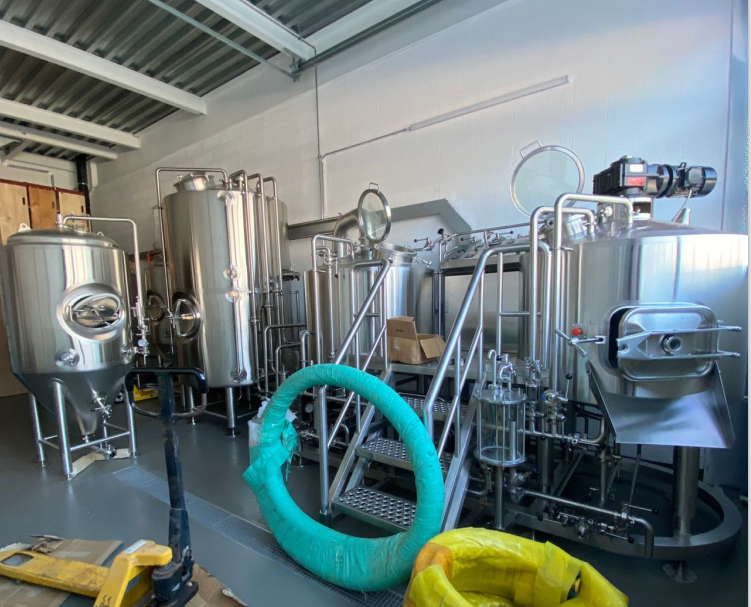

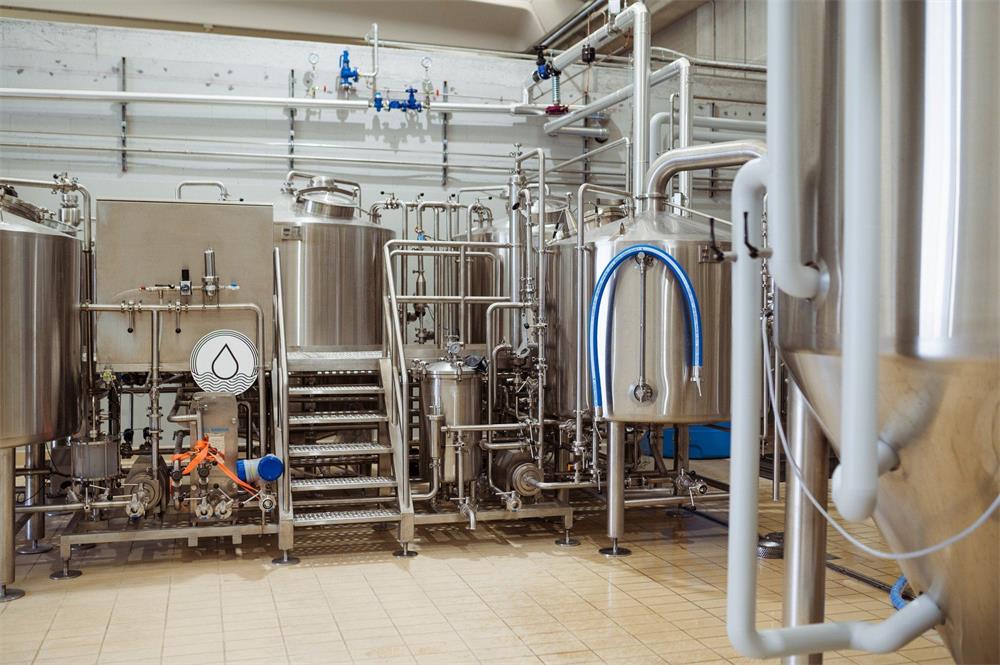

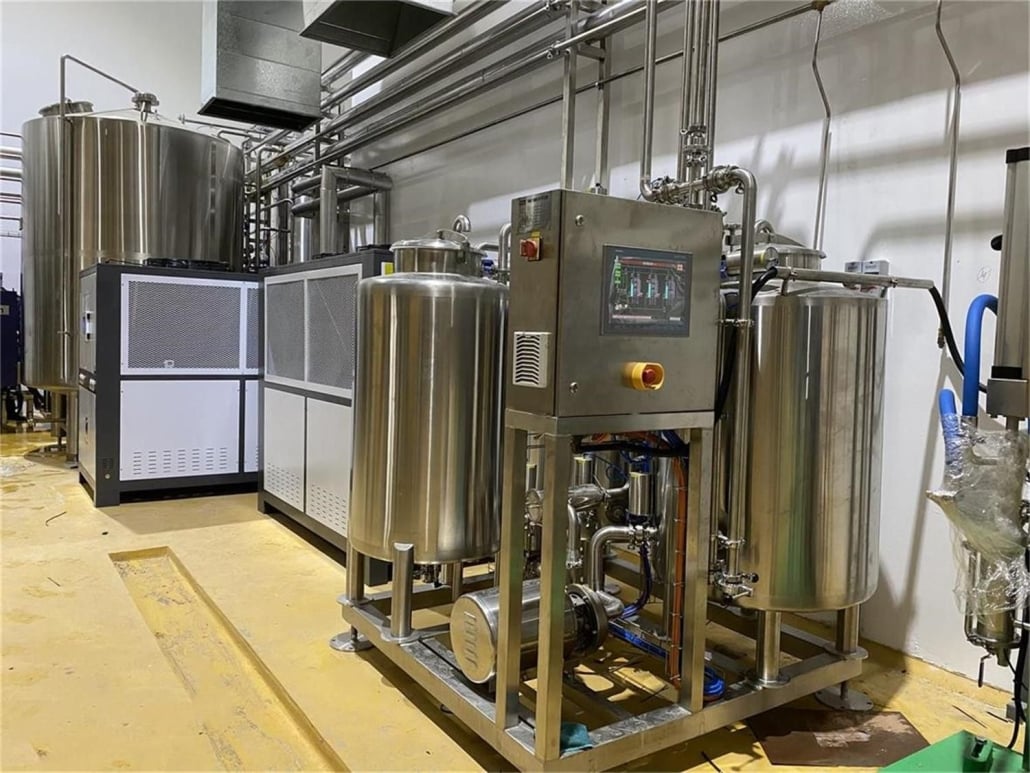

How to Choose the Right Supplier
Selecting the right supplier for your bright beer tank is critical. Here’s what to consider:
Supplier Evaluation Criteria
| Criteria | Details |
|---|---|
| Reputation | Look for suppliers with a track record of delivering high-quality equipment. |
| Price Range | Compare prices to ensure they align with your budget without compromising on quality. |
| Customization Options | Ensure the supplier offers tanks tailored to your specific brewing needs. |
| Customer Support | Assess the availability of technical support and warranty coverage. |
| Lead Times | Inquire about delivery times to avoid delays in your production schedule. |
Top Suppliers and Price Ranges
| Supplier | Price Range (USD) | Features |
|---|---|---|
| ABC Brewery Solutions | $5,000 – $20,000 | Customizable designs, advanced cooling systems. |
| CraftTank Co. | $4,000 – $15,000 | Compact options for small-scale breweries. |
| BrewTech Industries | $6,000 – $25,000 | High-capacity tanks with premium materials. |
Installation, Operation, and Maintenance
Installation Tips
- Ensure the foundation can support the tank’s weight when full.
- Install near existing glycol lines for efficient cooling.
- Verify that electrical connections meet local safety standards.
Operation Guidelines
- Maintain proper pressure levels during carbonation.
- Use the sampling port to test beer quality regularly.
- Ensure the cooling system operates consistently to avoid temperature fluctuations.
Maintenance Checklist
| Task | Frequency | Details |
|---|---|---|
| Clean interior surfaces | After every batch | Use a CIP (clean-in-place) system with appropriate cleaning agents. |
| Inspect seals and gaskets | Monthly | Check for wear and replace as needed to maintain pressure integrity. |
| Calibrate pressure gauges | Quarterly | Ensure readings are accurate to avoid over-pressurization. |
Advantages and Limitations of Bright Beer Tanks
| Aspect | Advantages | Limitations |
|---|---|---|
| Clarity | Achieves crystal-clear beer through maturation and clarification. | Requires additional space and investment. |
| Carbonation | Enables precise carbonation control. | Mishandling can lead to over-carbonation issues. |
| Consistency | Ensures consistent flavor and quality across batches. | Demands regular maintenance for optimal operation. |
| Versatility | Can be used for cold storage as well. | Limited functionality beyond beer conditioning. |
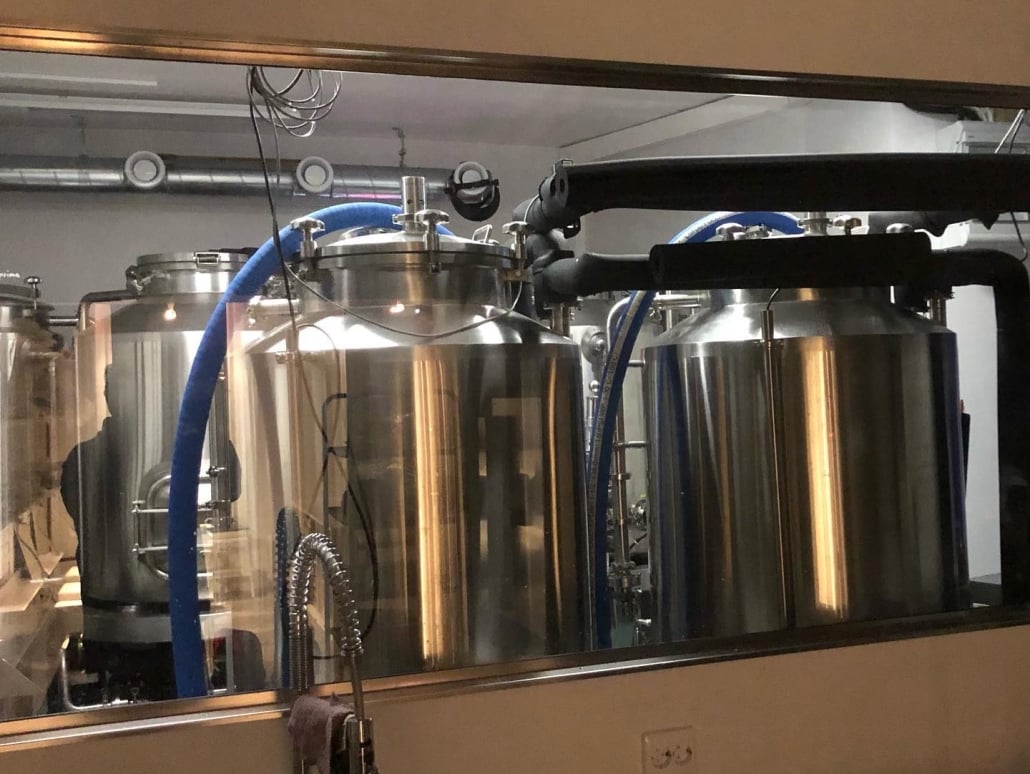
FAQs
| Question | Answer |
|---|---|
| What is a bright beer tank used for? | For beer maturation, carbonation, and clarification before packaging. |
| How do I clean a bright beer tank? | Use a CIP system with caustic and acid cleaners, followed by rinsing. |
| Can bright beer tanks store other liquids? | Yes, they can store cider, soda, and other carbonated beverages. |
| What size tank should I choose? | It depends on your production scale; consult a supplier for recommendations. |
| How much does a bright beer tank cost? | Costs range from $4,000 to $25,000 based on size and features. |
Conclusion
Bright beer tanks are a cornerstone of modern brewing, ensuring your beer meets the highest quality standards before reaching customers. From choosing the right tank and supplier to mastering installation and maintenance, understanding these aspects is crucial for any brewery. With this guide, you’re well-equipped to make informed decisions and optimize your brewing process.
Frequently Asked Questions (FAQ)
1) What carbonation pressures and temperatures work best in a Bright Beer Tank?
- Typical setpoints: 0.8–1.2 bar (12–18 psi) at 0–2°C for lagers; 0.7–1.0 bar (10–15 psi) at 2–4°C for ales. Use Henry’s law calculators and allow 12–48 hours depending on stone flow and beer temperature.
2) How do I size a carbonation stone and CO2 flow for a BBT?
- Common guideline: 0.5–1.0 L/min CO2 per 10 hL through a 0.5–1.0 μm stone. Start low to avoid over-foaming; verify with inline/dip CO2 meters.
3) What are best practices to prevent oxygen pickup in the BBT?
- Fully purge tank and lines with CO2 or nitrogen to <0.5% O2, use positive pressure during transfers, de-aerated water (DAW) for any dilution, and low-oxygen gaskets/valves. Target packaged DO <30 ppb; BBT DO ideally <10 ppb.
4) How should I CIP a Bright Beer Tank after a hazy or adjunct-heavy beer?
- Pre-rinse warm → caustic 1–2% at 60–70°C (15–30 min) → rinse → acid 0.5–1% (10–15 min) → final rinse → sanitize (PAA 150–250 ppm). Inspect and brush carbonation stone separately; verify with ATP or microbiological swabs.
5) Can one BBT serve multiple packaging lines without foaming issues?
- Yes, when equipped with a buffer/accumulator tank, flow control valves, and stable jacketed temperature. Maintain constant head pressure with a precise pressure regulator and anti-vacuum valve to avoid CO2 breakout during high-demand fills.
2025 Industry Trends for Bright Beer Tanks
- Inline QA normalization: more breweries adopt inline CO2/DO meters between fermenter and BBT and BBT to filler for real-time control.
- Energy reduction: insulated, multi-zone jackets and glycol VFD pumps lower power use by 10–20%.
- Low-oxygen design: crevice-free sample valves, DAW skids, and inert gas recovery/purge sequences to reach sub-10 ppb DO in BBT.
- Hygienic automation: compact skid packages integrate CIP, carbonation, pressure/level control, and data logging (PLC/SCADA) at mid-market price points.
- Multi-beverage use: BBTs optimized for seltzer, RTD cocktails, and NA beer finishing with dedicated filtration and sanitary changeover protocols.
Operations & Quality Benchmarks (2024–2025)
| Metric | Typical Range | 2025 Best Practice Target | Notes / Sources |
|---|---|---|---|
| BBT DO level (ppb) | 10–40 | ≤10 | Low-oxygen strategies; ASBC methods |
| Final CO2 (volumes) | 2.2–2.7 vol | Style-dependent, ±0.05 vol | Inline CO2 meters; BA guidance |
| BBT hold temperature | 0–2°C lagers; 1–3°C ales | ±0.2°C stability | Improves foam/cling and clarity |
| Transfer O2 pickup (ppb) | 10–50 | <10 | Purged lines, positive pressure |
| CIP cycle time (min) | 50–90 | 35–60 | Conductivity control, optimized sprayballs |
| Packaging line uptime fed from BBT | 85–92% | ≥95% | Stable pressure/flow control |
Authoritative sources:
- Brewers Association (BA): https://www.brewersassociation.org/
- ASBC Methods of Analysis (CO2, DO): https://www.asbcnet.org/
- MBAA Technical Quarterly: https://www.mbaa.com/
Latest Research Cases
Case Study 1: Inline DO/CO2 Control Tightens Bright Tank Specs (2025)
Background: A 60,000 hL/year brewery saw variable DO post-transfer and occasional gushing at packaging.
Solution: Installed inline optical DO + CO2 meters on fermenter→BBT and BBT→filler lines, added automated CO2 backpressure and DAW purge routines.
Results: BBT DO median dropped from 22 ppb to 7 ppb; CO2 variance reduced from ±0.12 vol to ±0.04 vol; over-foam rejects down 38%; shelf-life sensory stability improved at 20 weeks.
Case Study 2: Energy-Efficient Jacket and Glycol VFD Retrofit (2024)
Background: High glycol power consumption and temperature swings during high-volume carbonation.
Solution: Added multi-zone insulation, upgraded jacket controls, and VFDs on glycol pumps with tighter deadbands.
Results: 16% reduction in glycol kWh per hL; BBT temperature stability improved to ±0.2°C; carbonation time reduced by 15% due to more consistent solubility conditions.
Expert Opinions
- Dr. Tom Shellhammer, Professor of Fermentation Science, Oregon State University
“Controlling dissolved oxygen below 10 ppb in the bright beer tank pays dividends in flavor stability and foam retention. Low-oxygen transfers and rigorous purging are foundational.” - Ashton Lewis, Technical Support Director, BSG; former BYO ‘Mr. Wizard’ columnist
“Consistency in carbonation comes from process discipline—stone sizing, controlled gas flow, stable temperature, and verified CO2 volumes before packaging.” - Laura Burns, PhD, Director of R&D, Omega Yeast
“Residual sanitizer and poor rinse control can impact foam and flavor. Validate CIP endpoints with conductivity and rapid ATP tests to protect product quality.”
Practical Tools/Resources
- Brewers Association Packaging & Oxygen Control Guides: https://www.brewersassociation.org/
- ASBC Methods for DO and CO2 Measurement: https://www.asbcnet.org/
- MBAA resources on tank design and hygienic sampling: https://www.mbaa.com/
- CO2/DO calculators and logging (Brewer’s Friend): https://www.brewersfriend.com/
- Inline instrumentation vendors (application notes): Anton Paar, Hamilton, Pentair (consult manufacturer sites)
- CIP best practices and sanitizer guidance (Ecolab F&B): https://en-us.ecolab.com/offerings/clean-in-place-cip
Last updated: 2025-08-29
Changelog: Added focused BBT FAQs, 2025 trends with benchmark table, two recent case studies on DO/CO2 control and energy efficiency, expert viewpoints, and practical resources aligned with Bright Beer Tank operations.
Next review date & triggers: 2026-02-28 or earlier if BA/ASBC publish updated DO/CO2 methods, new inline sensor standards emerge, or internal BBT DO exceeds 10 ppb for two consecutive audits.
Share this entry
Interested in learning more about Brewing Systems including additional details and pricing information? Please use the form below to contact us!
YOLONG BREWERY EQUIPMENT FAQS
- Commercial Brewery / Craft Brewery / Microbrewery / Nanobrewery
- What is The Difference Between Craft Beer and Industrial Beer?
- The Bespoke Differences In Custom Brewing Systems
- Everything You Need to Know About Kettle Souring
- How to Choose Brewing Equipment for Your business?
- How To Choose The-Best Partner To Build Your Commercial Microbrewing System?
- Two Detection Sensors That You Need To Use In Your Brewhouse System
- Remote Control Applications in Brewing Equipment/How does it work?
- How To Clean Your Brand New Brewery Tanks?

